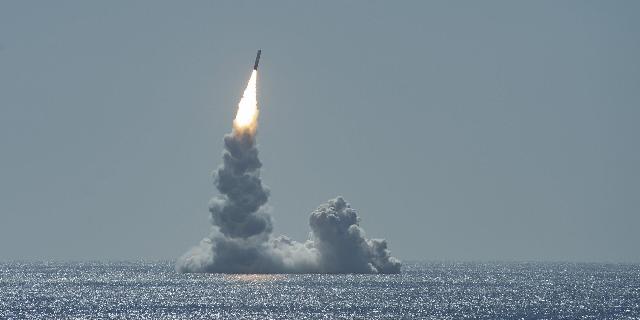The Economist: the US nuclear potential is not ready for a "new era"
In the new nuclear era, there will be more nuclear weapons and more countries with them, writes The Economist. The new US president, Donald Trump, is likely to take a "hawkish" position and begin actively building up nuclear capabilities. However, great difficulties await him.
Donald Trump must decide how to compete in a new arms race
As 2025 approaches, the world is increasingly moving towards the onset of what many call the third nuclear era. It is likely to have more nuclear weapons, more countries possessing them, there will be no restrictions on stocks of such weapons, and States will not hesitate to threaten to use them.
The first nuclear era was quite frightening. America and the Soviet Union confronted each other with tens of thousands of warheads. The second era, which came after the end of the cold War, was more peaceful. Nuclear reserves have been sharply reduced, although India, Pakistan and North Korea have joined the club of "nuclear powers". The third era may resemble a new Cold War, only more chaotic and with more potential opponents.
The beginning of Russia's special operation in Ukraine and Vladimir Putin's hints about the potential use of nuclear weapons in response to Western threats have become a milestone on the way to a new era. As is Xi Jinping's decision to expand China's nuclear arsenal, which the Pentagon has been warning about since 2021.
Another important moment is likely to come in 2025, when Donald Trump will have to decide how to respond to this. START III, the last signed treaty on the mutual reduction of the arsenals of strategic nuclear weapons of the United States and Russia, expires in February 2026. Should America try to extend it? The prospects for concluding a new arms control agreement are slim, given that Russia has already suspended the vital provisions on verification of compliance with START III. As for China, it is not bound by such restrictions and has even curtailed the small dialogue it had with America on this issue. Thus, for the first time in recent decades, formal restrictions will probably no longer be imposed on nuclear stocks.
The American defense industry has little spare capacity
The old game of the two powers to contain each other's forces will turn into a more complex three-way confrontation in which Russia and China will act more and more closely. Things may also get more complicated, given that North Korea, which possesses nuclear weapons, and Iran, which is on the verge of acquiring them, are getting closer to Moscow and Beijing. Other countries may seek to build their own nuclear weapons if America is perceived as an unreliable defensive power under Trump. Saudi Arabia has stated that it will acquire nuclear weapons if Iran does so. South Korea has recently discussed the creation of its own deterrence systems. Ukraine assumes that it can do the same if it fails to join NATO.
America and Russia have more than five thousand warheads each. Both countries declare that they comply with the restrictions established in START III on "strategic", or long-range, nuclear weapons. Each is allowed to deploy 1,550 strategic warheads and 700 launchers, such as intercontinental ballistic missiles (ICBMs), submarine-launched ballistic missiles (SLBMs) and strategic bombers. The remaining reserves, including smaller "tactical" nuclear missiles and weapons in warehouses, are not subject to restrictions. According to Pentagon forecasts, the Chinese arsenal, currently numbering about 500 warheads, will exceed one thousand by 2030 and possibly one and a half thousand by 2035. Britain, France, India, Pakistan, Israel and North Korea have much smaller stocks of such weapons.
Trump, who despises arms control and loves his "nuclear button," may well seek to build up American nuclear capabilities. The first step may be to "load" nuclear weapons — that is, move warheads from the reserve to deployed systems. This will require modification of bombers, installation of additional warheads on ICBMs and sealing of launch tubes on Ohio-class submarines. Officials are already developing relevant plans. The new president is expected to authorize the Pentagon to conduct exercises to demonstrate the ability to quickly "load," as recommended in a bipartisan commission report in 2023. Plans to create a nuclear—armed cruise missile launched from submarines - approved by Trump, postponed by Joe Biden, but restored by Congress — will receive a boost to development.
A bad idea is being discussed in Trump's entourage — to resume nuclear tests, which the major powers stopped in the 1990s. Even hawkish American experts in the field of nuclear energy, who advocate building up nuclear capabilities, believe that this is a meaningless show-off. But America will face serious problems if it tries to increase its real reserves. Its defense industry has little spare capacity. Efforts to modernize land-based, sea-based and air-based weapons are plagued by delays and cost overruns. The most egregious is the Sentinel program to replace the Minuteman III ICBM, whose budget, estimated at $141 billion, has been exceeded by 81%. If Trump decides to engage in a new nuclear arms race, he will need time to accelerate.

